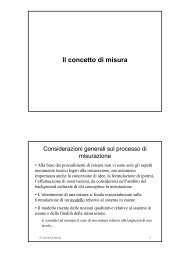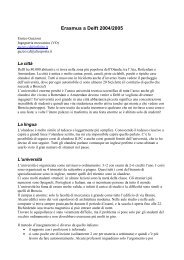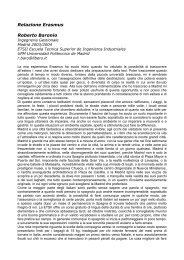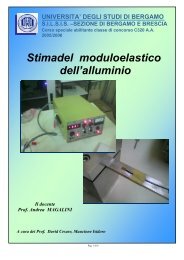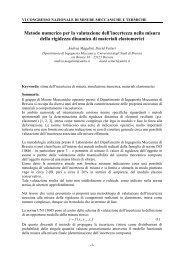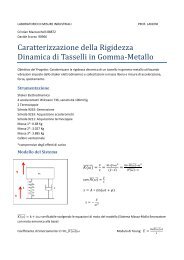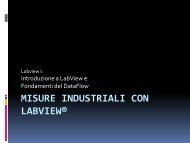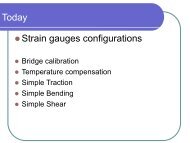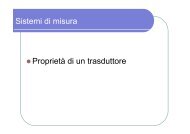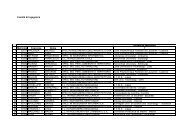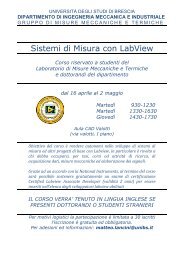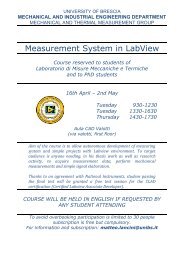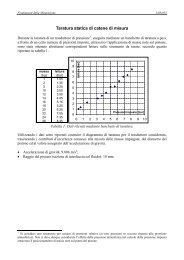Caratteristiche dinamiche degli strumenti di misura - ArchiMeDes
Caratteristiche dinamiche degli strumenti di misura - ArchiMeDes
Caratteristiche dinamiche degli strumenti di misura - ArchiMeDes
You also want an ePaper? Increase the reach of your titles
YUMPU automatically turns print PDFs into web optimized ePapers that Google loves.
La funzione impulso considerata è tale per cui, in corrispondenza <strong>di</strong> t = 0, si<br />
verifica un trasferimento <strong>di</strong> energia infinito: infatti, il segnale passa da valore<br />
nullo ad un valore infinito per poi ritornare a valore nullo; ciò accade in un<br />
intervallo <strong>di</strong> tempo infinitesimo. È chiaro che tale segnale non può esistere in<br />
natura e, dunque, che la risposta trovata è relativa ad un impulso ideale.<br />
Tuttavia se T è sensibilmente inferiore a τ (<strong>di</strong> solito si considera almeno un<br />
or<strong>di</strong>ne <strong>di</strong> grandezza) quella trovata è una buona approssimazione della risposta<br />
al segnale reale <strong>di</strong> durata piccola ma finita.<br />
La risposta all’impulso non <strong>di</strong>pende dalla particolare “forma” dell’impulso<br />
considerato, ma solo dalla sua ampiezza A (sempre nell’ipotesi che la durata T<br />
sia breve).<br />
La risposta all’impulso coincide con l’evoluzione libera del sistema a partire<br />
da una con<strong>di</strong>zione perturbata per cui qo = KA/τ in t= 0 + .<br />
<strong>Caratteristiche</strong> <strong><strong>di</strong>namiche</strong> 37<br />
Strumento del secondo or<strong>di</strong>ne<br />
Per strumento <strong>di</strong> secondo or<strong>di</strong>ne si intende uno strumento che dal<br />
punto <strong>di</strong> vista <strong>di</strong>namico possa essere descritto dalla seguente<br />
equazione <strong>di</strong>fferenziale lineare a coefficienti costanti del secondo<br />
or<strong>di</strong>ne.<br />
2<br />
d qo<br />
dqo<br />
a2 + a1<br />
+ a0qo<br />
= b0q<br />
2<br />
i<br />
dt dt<br />
Dividendo entrambi i membri per a0 ...<br />
a<br />
a<br />
d q a dq<br />
Si definiscono termini:<br />
n<br />
a0<br />
a2<br />
= ω<br />
Frequenza naturale (propria)<br />
ς =<br />
2<br />
a1<br />
a ⋅ a<br />
Fattore <strong>di</strong> smorzamento<br />
0<br />
2<br />
2<br />
0<br />
2<br />
o 1 + 2<br />
dt a0<br />
o<br />
0 + qo<br />
= qi<br />
dt a0<br />
<strong>Caratteristiche</strong> <strong><strong>di</strong>namiche</strong> 38<br />
b<br />
b<br />
a<br />
0 K = Sensibilità statica<br />
0




